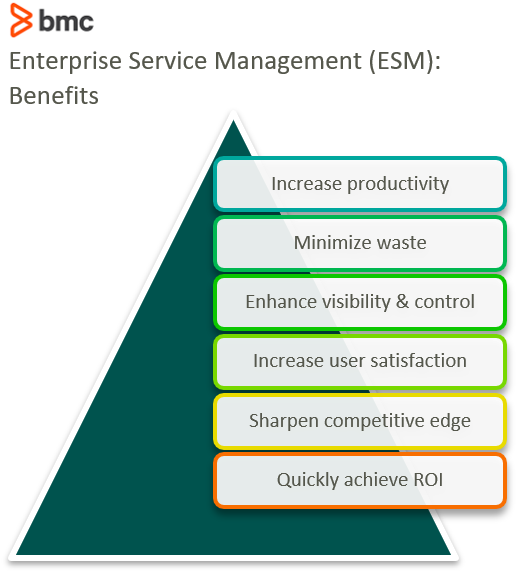Enterprise Service Management vs ITSM: What’s The Difference?


Service management is a set of processes used in designing, operating, and controlling the delivery of IT services. With a combination of tools, processes, and people, Service Management provides a framework for organizations to deliver IT services while enabling collaboration between internal cross-functional teams and the clients.
As an important aspect of digital transformation, the key to successful service management is the continuous, streamlined approach to maintaining and delivering IT services. While there are several frameworks that organizations can leverage to improve their service management practices, it's crucial to follow the best practices after diligently referring to an organization's use case. With that in mind, the following points typically form the basis of creating an effective service management framework. An adopted framework should:
In this article, we delve into two of the service management approaches and their major differences : IT Service Management (ITSM) and Enterprise Service Management (ESM).
IT Service Management (ITSM) is a strategic approach to deliver IT as a service. It comprises a set of workflows and tools for optimally creating, implementing, delivering, and managing IT services for customers focusing on customer needs. The goal of ITSM is to provide processes and tools to IT teams to help them manage end to end IT services while improving business performance, increasing productivity, and enhancing customer satisfaction.
Additionally, ITSM focuses on facilitating the core IT functions of an organization, helping the business achieve its goals while managing costs by utilizing the IT budget maximally.
ITSM benefits businesses in the following ways:
ITSM focuses on optimizing IT for the organization, and there are different frameworks of best practices, processes, and tools that come into play to achieve this.
Although technology plays an integral role in delivering IT services, some procedures must be followed to ensure efficient IT service delivery encompassed in ITSM processes. Some of these core ITSM processes include:
ITSM frameworks are best practices and formalized guidelines that provide a systematic approach to implementing ITSM for organizations. These help organizations set their ITSM strategy while monitoring how they implement the chosen strategy. However, a crucial thing to note is that these frameworks are not 'rules' to follow strictly and are open to interpretation.
There are different ITSM frameworks as below, and organizations can combine them to achieve varied IT service delivery needs:
There are a variety of tools that enable the delivery of IT services by supporting associated tasks and workflows involved like incident, change management, service requests, etc. However, before choosing a particular ITSM solution, there are a few points to keep in mind when analyzing the options.
(View the Gartner® Magic Quadrant™ for ITSM Tools.)
First coined in 2002 by IBM as part of their strategy to address business-centric use-cases, ESM is a set of tools, processes and methodologies that aims to offer visibility into all aspects of service management and delivery across the entire enterprise.
ESM utilizes ITSM capabilities and processes in business areas of the organization, going beyond IT, to enhance operational efficiency and service delivery. It essentially takes service management principles, structures, and technologies from the ITSM concept and applies them to various business verticals of the organization such as Human Resources (HR), Legal, Finance, Marketing, etc.
(Read our full explainer on ESM.)

As ESM acts as an extension of ITSM, both frameworks share fundamental similarities in how they operate. Though ESM inherits all benefits of ITSM, in particular, ESM offers the following benefits:
At the same time, there are a few differences that can be summed up under the scope of application of IT to service management.
Service management is an integral part of an organization's operations, either at the IT level or a company-wide level, that ensures optimum performance, efficient & effective delivery, and ultimately offers enhanced business value.
To have better planning and management, IT operations are typically broken down into multiple services. Service management ensures smooth delivery of these qualitative and standardized services that support organizational activities. Efficient and effective service management frameworks not only facilitates organizations to adapt better to changing customer requirements but also helps in developing long term relationships with the customers.
The ITSM approach addresses service management at the IT level while ESM extends the principles and processes of service management to various departments and business verticals of an organization. Though the goals of ESM and ITSM overlap to an extent, both adopt similar processes and tools to manage services of an organization.